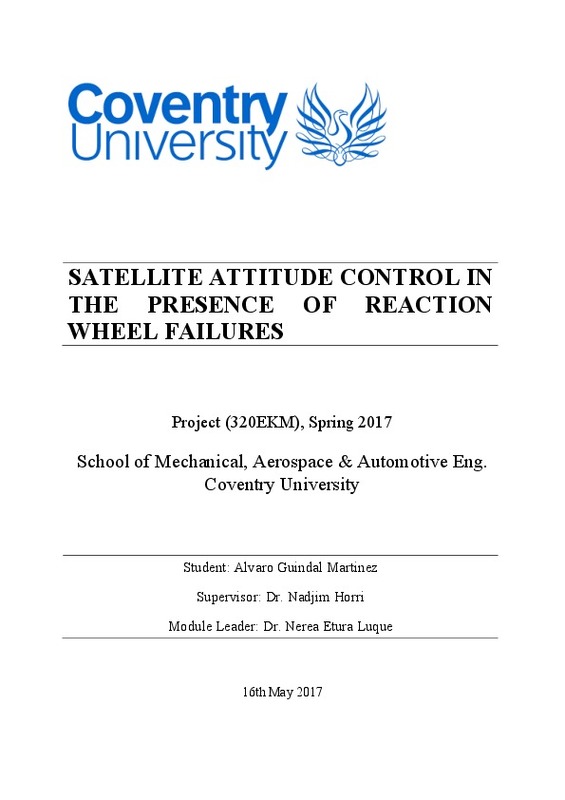JavaScript is disabled for your browser. Some features of this site may not work without it.
Buscar en RiuNet
Listar
Mi cuenta
Estadísticas
Ayuda RiuNet
Admin. UPV
Satellite attitude control in the presence of a reaction wheel failure
Mostrar el registro completo del ítem
Guindal Martínez, Á. (2017). Satellite attitude control in the presence of a reaction wheel failure. Universitat Politècnica de València. http://hdl.handle.net/10251/143389
Por favor, use este identificador para citar o enlazar este ítem: http://hdl.handle.net/10251/143389
Ficheros en el ítem
Metadatos del ítem
| Título: | Satellite attitude control in the presence of a reaction wheel failure | |||
| Autor: | Guindal Martínez, Álvaro | |||
| Director(es): | Horri, Nadjim | |||
| Entidad UPV: |
|
|||
| Fecha acto/lectura: |
|
|||
| Resumen: |
[ES] El trabajo trata sobre el estudio de cómo se puede controlar la orientación de un satélite pequeño (150 kg) situado en una órbita baja terrestre en el caso de que se produzca un fallo en una de las ruedas de reacción. ...[+]
[EN] This work is based on the study of the attitude controllability of a small satellite (150 kg) located in a low-Earth orbit in the case of a reaction wheel failure. Generally, satellites are equipped with reaction ...[+]
|
|||
| Palabras clave: |
|
|||
| Derechos de uso: | Reserva de todos los derechos | |||
| Editorial: |
|
|||
| Titulación: |
|
|||
| Tipo: |
|
recommendations
Este ítem aparece en la(s) siguiente(s) colección(ones)
-
ETSIADI - Trabajos académicos [9133]
Escuela Técnica Superior de Ingeniería Aeroespacial y Diseño Industrial







